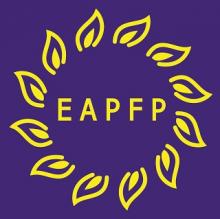EAPFP calls for a single façade test method in Europe
EAPFP calls for a single façade test method in Europe
With the European Commission (EC) currently evaluating the options for the development of a new façade test and classification system in the European Union, the European Association for Passive Fire Protection (EAPFP) is calling for a single test method to be established.
The recent Address Downtown Dubai hotel fire and other high profile fires in tall buildings have highlighted that façades present a real fire risk and that a better understanding of their behaviour in fire is vital. There is now general agreement that conventional small scale reaction to fire tests and larger scale fire resistance tests are unsuitable for modelling the behaviour of façade fires.
Since a number of large and small scale fire resistance tests have been developed, the EC is currently evaluating the options for developing a method for the fire assessment of façades that would meet the needs and requirements of all EU Member States.
Current EC proposals present two options. The first is to use the already developed test method defined in BS 8414-1: Fire performance of external cladding systems (complemented by Sweden’s SP Fire 105) as the European large scale assessment method for façades; and to keep the existing draft German DIN 4102-20 method as the small scale assessment method across Europe. The second option is to develop European large scale and intermediate scale assessment methods, as proposed by the European Organisation for Technical Assessment (EOTA).
The EAPFP believes that neither option is ideal and that the way forward is a single test method that meets the requirements for both large and small scale testing of all the different product classes, as well as the regulatory needs in Member States. It also recommends that the classification of the fire performance of all types of building façades is addressed at the same time as decisions are made about the test method. The EAPFP is calling for a number of principles to be established in the development process.
“Thresholds, levels, and classes that currently apply in Member States are strongly tied to national fire safety and building codes. The competence and responsibility of Member States have to be fully respected in the process so that the established and/or required level of safety in case of fire is improved or at least maintained,” says EAPFP Vice President Miroslav Smolka.
“The EAPFP believes that the European Committee for Standardization (CEN) is the only body that is truly competent and transparent enough to be given the task to develop a test method that would meet the needs and requirements of all EU Member States.
“There are a number of test methods available and used in Member States, as well as international ISO standards but the EAPFP believes there is enough background information and research on the topic to enable a new test to be developed by CEN within a standard time frame.”
As the European body representing national fire protection associations throughout the European Union, EAPFP asks that its views are taken into consideration during upcoming discussions in the EC Standing Committee for Construction Advisory Group and offers its assistance in any way required.
For further information on the EAPFP visit www.eapfp.com; tel: +44 (0)1420 471616; e-mail: admin@eapfp.com
Published March 2016

